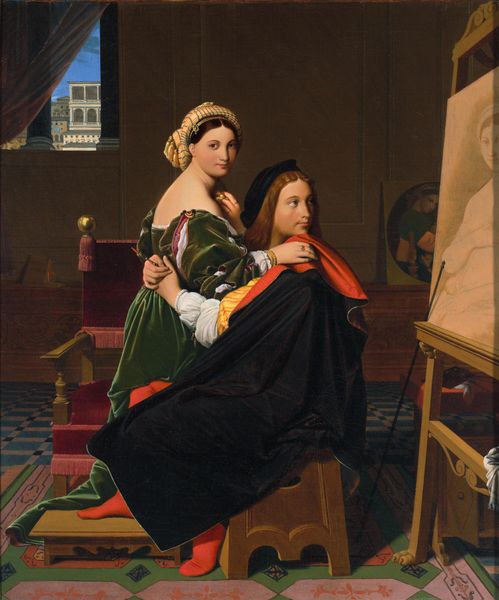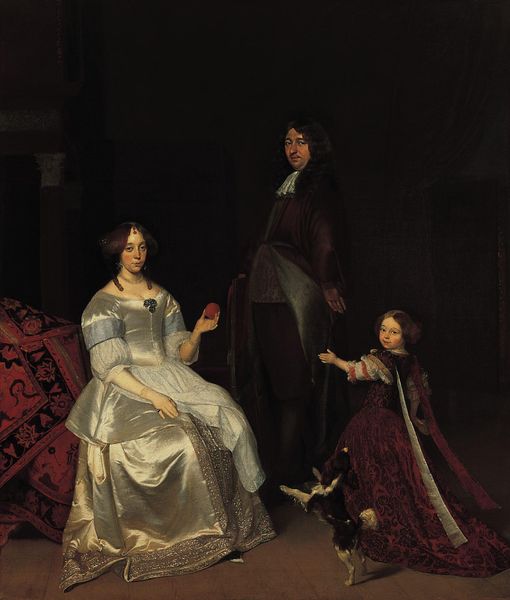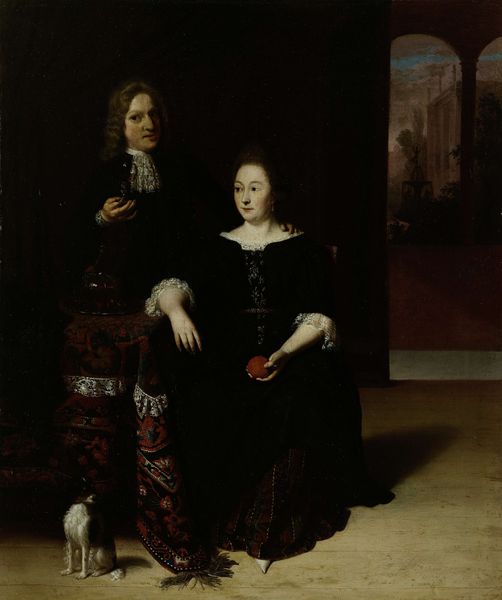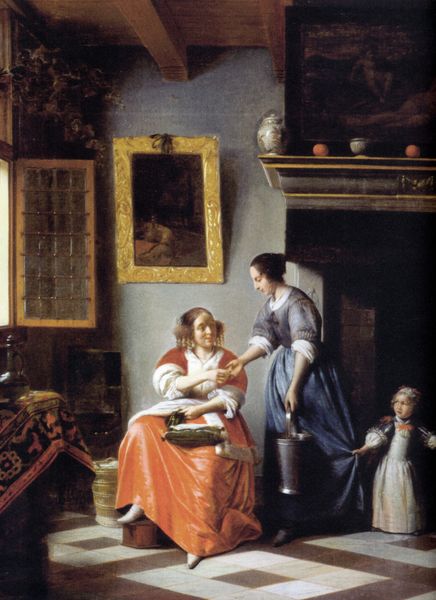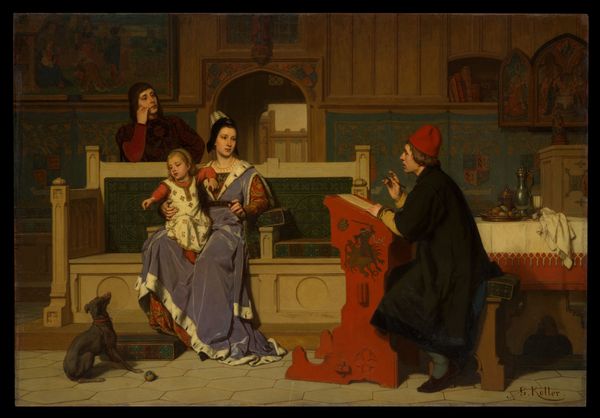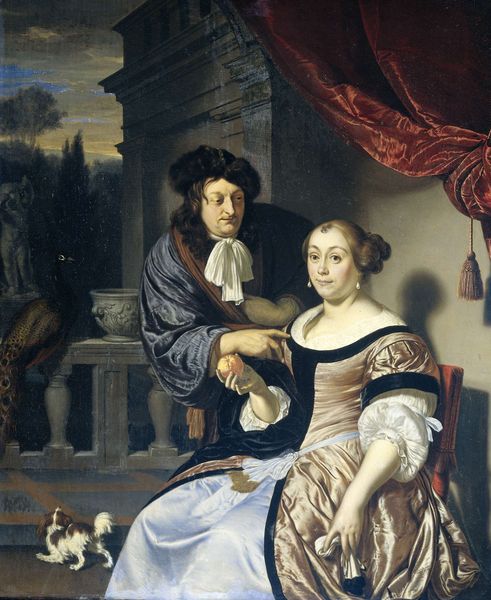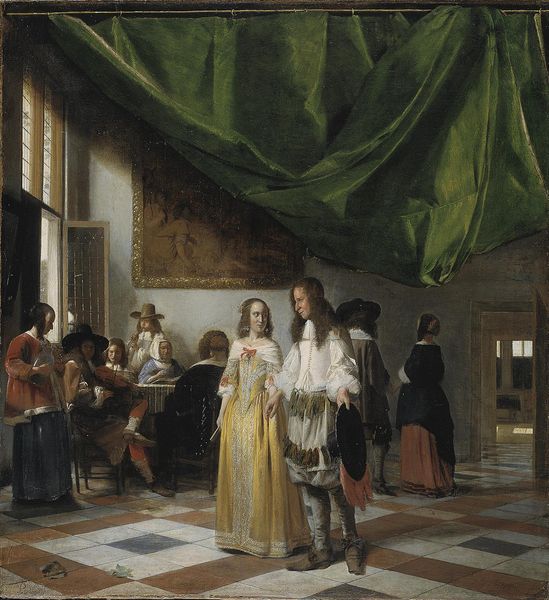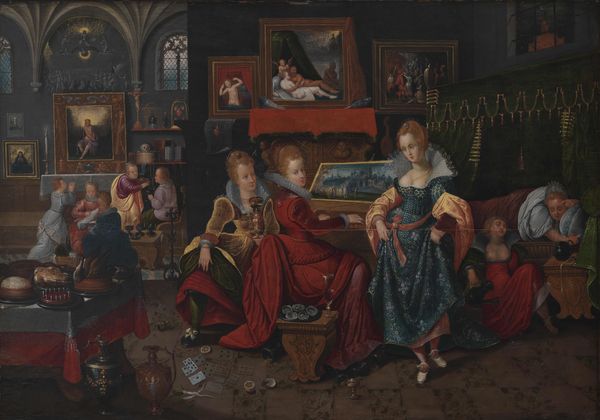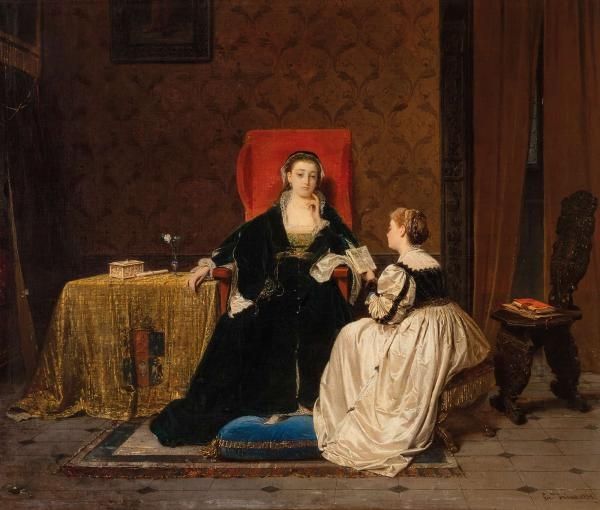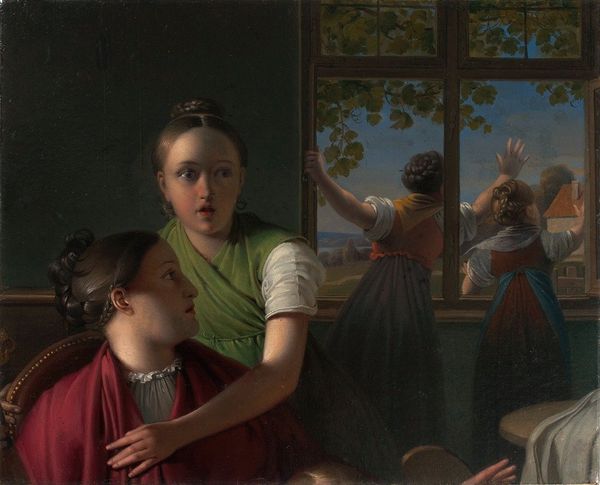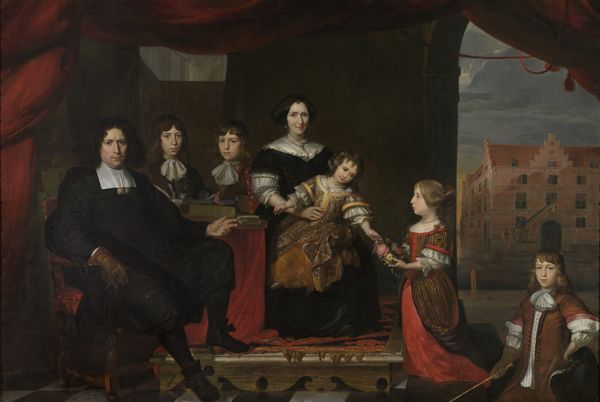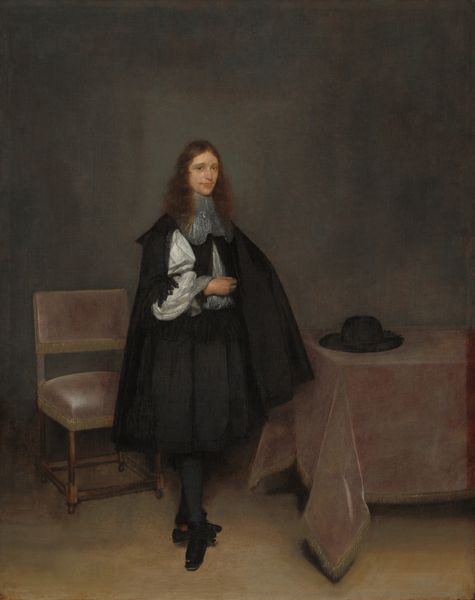
oil-paint
#
portrait
#
character portrait
#
oil-paint
#
oil painting
#
romanticism
#
history-painting
#
academic-art
Copyright: Public domain
Editor: Ingres’ *Raphael and the Fornarina*, painted in 1814 using oil, shows Raphael in his studio with his mistress. There's a stiffness to their pose; it almost feels like a staged tableau. How do you approach a piece like this formally? Curator: Consider first the geometric structure Ingres employs. The composition is dominated by vertical and horizontal lines—the easel, the window, the architecture in the background—creating a sense of order, almost rigidity. How does that linear structure relate to the figures, do you think? Editor: The figures interrupt the lines and create curves to contrast against all the geometry of the painting. But, I notice how the artist carefully positioned their bodies in this artificial-looking embrace... Curator: Precisely. Notice how Ingres uses contrasting textures – the smoothness of the skin against the velvet, the draping of the cape. Do you see a connection between how Ingres renders surface textures and the emotional tenor of the image? Is there an overt emotional display in this tableau? Editor: No, it's reserved. They look impassive, but I notice how her hand rests gently on his shoulder. How can surface textures create emotional distance? Curator: Ingres gives us so much detail in the objects and fabric around the figures; do they somehow distract from focusing on the figures themselves, as you consider the artist's intention in depicting those emotional dynamics? Editor: Yes, actually, now that you mention it. I didn’t consider how the artist pays more attention to the surfaces of things and the relationship between shapes and less to the emotions of these characters. Thank you, I’ve never approached art this way! Curator: My pleasure! Paying close attention to composition enables richer understanding of the artist's goals.
Comments
No comments
Be the first to comment and join the conversation on the ultimate creative platform.
